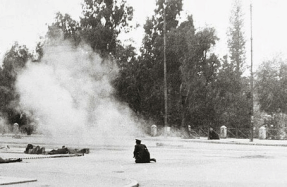LEYTE GULF



The Battle of Leyte Gulf was a major naval engagement fought between October 23-26 1944 across a wide expanse of the Pacific Ocean near the Philippine Islands. One of the decisive naval battles of World War II in the Pacific, it was actually a series of engagements, collectively recognised as the largest naval battle in history. After US forces mounted an invasion of the island of Leyte, the Japanese devised a complex plan of attack, hoping to destroy the US transports and escort ships that were landing and providing logistical support to American troops.
The Leyte landings marked the return of American forces to the Philippines and their initial step in liberating the islands from Japanese occupation. The US Navy narrowly avoided catastrophe when heavy Japanese warships engaged a light screening force near the American landing beaches and managed to inflict a decisive defeat on the Imperial Japanese Navy. The Japanese attempt to disrupt the landings in the Philippines failed and the offensive capability of the Imperial Navy was seriously eroded, particularly with the loss of numerous warships and its relatively few remaining combat aircraft. After Leyte Gulf, the US Navy dominated the remainder of the naval war in the Pacific.
Background
In the summer of 1944, US commanders looked to continue their steady approach to the Japanese home islands. General Douglas MacArthur, evacuated from the Philippines more than two years earlier, convinced President Franklin D Roosevelt that the US had an obligation to the Filipino people to liberate them from Japanese occupation and had pledged “I shall return!” when he’d relocated to Australia from the islands in the spring of 1942.
For American war planners, the liberation of the Philippines would sever Japanese supply lines to occupied territories in the East Indies. In addition, it would provide bases for further offensive operations against Japan itself, and enable US naval and air assets to reduce the threat from Japanese forces on the island of Formosa
You’re reading a preview, subscribe to read more.
Start your free 30 days





